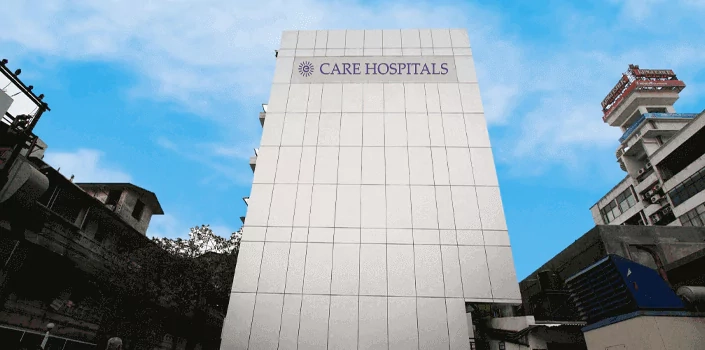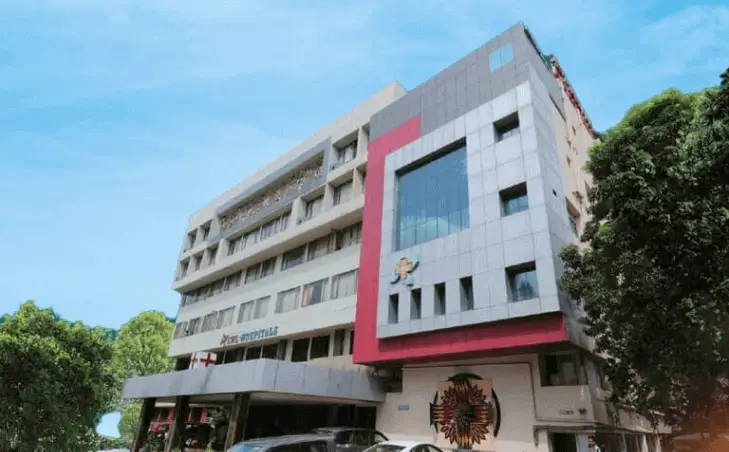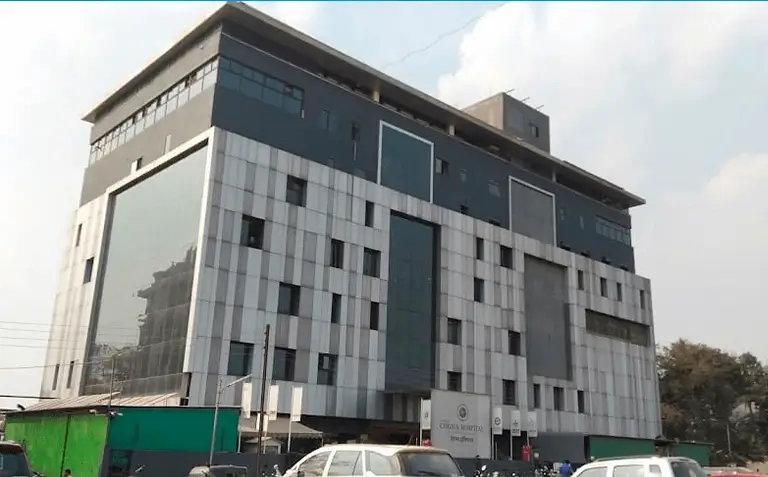-
Doctors
-
Specialities & Treatments
Centre of Excellence
Specialties
Treatments and Procedures
Hospitals & Directions HyderabadCARE Hospitals, Banjara Hills CARE Outpatient Centre, Banjara Hills CARE Hospitals, HITEC City CARE Hospitals, Nampally Gurunanak CARE Hospitals, Musheerabad CARE Hospitals Outpatient Centre, HITEC City CARE Hospitals, Malakpet
HyderabadCARE Hospitals, Banjara Hills CARE Outpatient Centre, Banjara Hills CARE Hospitals, HITEC City CARE Hospitals, Nampally Gurunanak CARE Hospitals, Musheerabad CARE Hospitals Outpatient Centre, HITEC City CARE Hospitals, Malakpet Raipur
Raipur
 Bhubaneswar
Bhubaneswar Visakhapatnam
Visakhapatnam
 Nagpur
Nagpur
 Indore
Indore
 Chh. Sambhajinagar
Chh. SambhajinagarClinics & Medical Centers
Book an AppointmentContact Us
Online Lab Reports
Book an Appointment
Consult Super-Specialist Doctors at CARE Hospitals

Best Hospitals for Omentectomy Surgery in Hyderabad
- Advanced Technology
- Shorter Hospital Stay
- Pre & Post-Operative Care
- All Insurance Accepted

Chat With Our Experts
Get second opinion on Whatsapp
25 lakhs+
Happy Patients
Experienced and
skilled surgeons
17
Health Care Facilities
Top most Referral Centre
for Complex Surgeries
Advanced Omentectomy Surgery
The omentum is a fatty tissue that shields the stomach and colon. Doctors often remove it in about half of all epithelial ovarian cancer cases. This surgery is known as omentectomy. This article walks you through the surgery by explaining how to prepare, what the procedure involves, and what happens afterwards in recovery.
Why Choose CARE Group Hospitals for Omentectomy Surgery in Hyderabad
CARE Hospitals stands out as a top choice in Hyderabad to undergo omentectomy surgery.
The surgical advances made by CARE Hospitals include:
- Robotic surgery enhances precision in tough operations
- Invasive laparoscopic procedures help speed up healing
- Real-time frozen section analysis aids immediate surgical choices
- Comprehensive care plans before and after surgeries
Best Omentectomy Surgery Doctors in India


Pioneering Surgery Techniques at CARE Hospital
CARE Hospitals has advanced its surgery methods using the latest technology. By using innovative techniques in omentectomy surgeries, the hospital demonstrates its strong commitment to high-quality care.
The surgical team at CARE Hospitals now offers these modern solutions.
- Robotic-assisted Surgery: Surgeons use advanced robotic tools that provide better precision during operations. This precision is crucial to perform challenging ovarian resections or to examine lymph nodes.
- Laparoscopic Techniques: These less invasive methods help people recover more and reduce the chances of complications.
- Hyperthermic Intraperitoneal Chemotherapy (HIPEC): This modern method combines surgery with chemotherapy that is heated to improve results.
- Intraoperative Frozen Section Analysis: This allows pathologists to assess tissue samples right away, so surgeons can adjust their approach if needed.
Reasons to Perform Omentectomy Surgery
Doctors suggest omentectomy to treat cancer-related problems. Although cancer rarely begins in the omentum itself, this fatty tissue often becomes affected when cancer spreads from other abdominal areas.
Doctors may advise an omentectomy to treat these types of cancer:
- Prostate cancer
- Fallopian tube cancer
- Stomach cancer
- Ovarian cancer
- Colorectal cancer
- Appendix cancer
- Peritoneal mesothelioma
- Pseudomyxoma peritonei
Omentectomy Surgery Types
There are two primary kinds of omentectomy surgeries surgeons perform.
- Total Omentectomy: Known as supracolic omentectomy, this removes the entire omentum.
- Partial Omentectomy: Also called infracolic omentectomy, this removes just specific sections of the omental tissue.
Recent clinical research shares some key insights about these surgical methods. A meta-analysis comparing the two highlighted that partial omentectomy resulted in:
- Faster operation completion
- Less blood loss during surgery
- Comparable survival rates
Pre-surgery Preparation
Checking physical health plays a major role in getting ready for surgery. Patients need to undergo complete medical tests before booking the procedure. These checks include:
- Perform blood tests and assess heart and lung function
- Take chest X-rays and conduct echocardiograms
- Look into past anaesthesia experiences
- Go through the patient’s full medical history
Patients need to quit smoking and drinking alcohol weeks ahead of their surgery. Hospital prep involves wearing hospital clothes, shaving the surgical area, and taking a special pre-op shower. Patients also need to fast for several hours beforehand to prevent any issues caused by anaesthesia.
Omentectomy Surgery Steps
The choice of surgical method depends on the case. Surgeons pick one of two main options:
- Open surgery involves making one large cut in the abdomen to access the area. Laparoscopic surgery uses a few small cuts, special tools and a camera to help guide the procedure.
- Surgeons sometimes carry out other procedures at the same time such as removing lymph nodes or performing a hysterectomy. To detect if cancer has spread in early stages, doctors rinse the area with a sterile saltwater solution, a step called a "peritoneal wash."
Recovering After Surgery
The recovery period lasts between two and eight weeks, depending on the type of surgery and any extra procedures done. It involves:
- Staying in the hospital for 3 to 7 days
- Taking medicines to manage pain
- Doing breathing exercises to keep the lungs healthy
- Moving around and exercising the legs to lower the risk of blood clots
- Keeping the surgical areas clean with strict hygiene steps
Doctors give patients clear guidance on getting back to everyday tasks. Many individuals go back to their usual routines in 4 to 6 weeks. Follow-up visits help monitor recovery and tackle any issues.
Possible Risks and Challenges
Every surgery, including an omentectomy, carries some risks even though it is considered safe. These include:
- Bleeding
- Infection
- Blockage of the small intestine
- Formation of scar tissue bands in the abdomen known as adhesions, which can or block the intestines
- Some issues may occur after surgery. Research mentions ileus, bowel narrowing, abdominal infections like abscesses, and bacterial blood infections like sepsis.
- In the long term, donor-site hernias are the biggest issue linked to omentectomy surgery.
What Are the Benefits of Omentectomy Surgery?
Omentectomy surgery offers multiple benefits, including helping with diagnoses and providing treatment options.
Doctors typically aim to achieve four main purposes when using the procedure in cancer care:
- It prevents the cancer from spreading to the omentum.
- Surgeons use it to explore the extent of cancer and better understand its growth. This procedure also removes cancer cells already present.
- Patients with cancer that has not spread may gain curative advantages.
- Ovarian cancer omentectomy is essential in shaping treatment outcomes for those with epithelial ovarian cancer.
Insurance Assistance for Omentectomy Surgery
Having health insurance can help handle the costs tied to omentectomy surgery. Most insurance providers include necessary surgeries and cover different parts of the treatment process.
Our financial counsellors work with patients to look at options such as:
- Create customised payment plans to manage omentectomy costs
- Help patients submit insurance claims
- Provide guidance on required documentation
- Check co-payment rules
- Verify if post-surgery care is covered
Second Opinion for Omentectomy Surgery
Getting a second opinion before undergoing omentectomy can help patients choose the right treatment. Doctors often recommend consulting more than one specialist in cases involving rare cancers or complicated conditions that impact the omentum.
Hearing a different perspective can be helpful because surgeons may use different methods. Their techniques can vary from invasive options to more traditional open surgeries, depending on their skill and experience.
Conclusion
Omentectomy surgery plays an essential role in treating some cancers, especially ovarian and endometrial cancers. Advances in medicine have made this operation more reliable and less risky. Patients can benefit from robotic-assisted methods and invasive surgery.
Success rests on careful preparation, picking the right hospital and knowing what options exist. CARE Hospitals offers skilled surgical teams and full support to guide patients throughout the process.
Omentectomy Surgery Hospitals in India
-

CARE Hospitals, Banjara Hills, Hyderabad
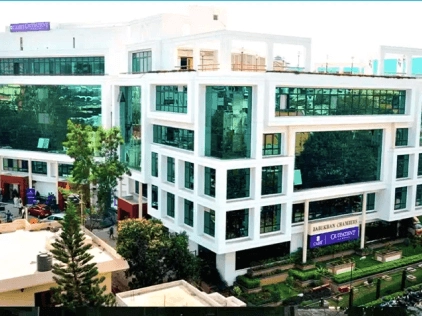
CARE Hospitals Outpatient Centre, Banjara Hills, Hyderabad

CARE Hospitals, HITEC City, Hyderabad
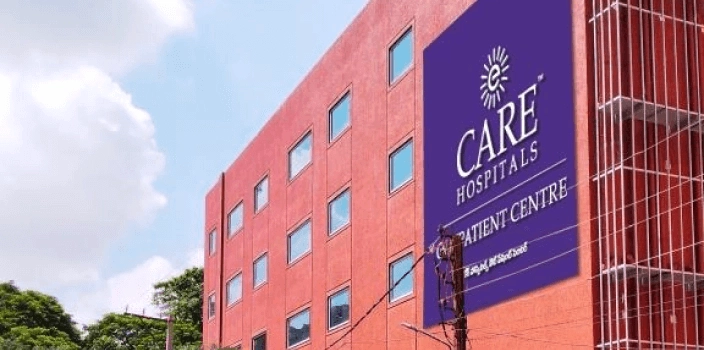
CARE Hospitals Outpatient Centre, HITEC City, Hyderabad

Gurunanak CARE Hospitals, Musheerabad, Hyderabad

CARE Hospitals, Nampally, Hyderabad
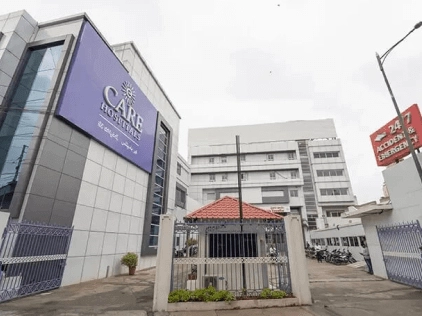
CARE Hospitals, Malakpet, Hyderabad

CARE Hospitals, Bhubaneswar

Ramkrishna CARE Hospitals, Raipur
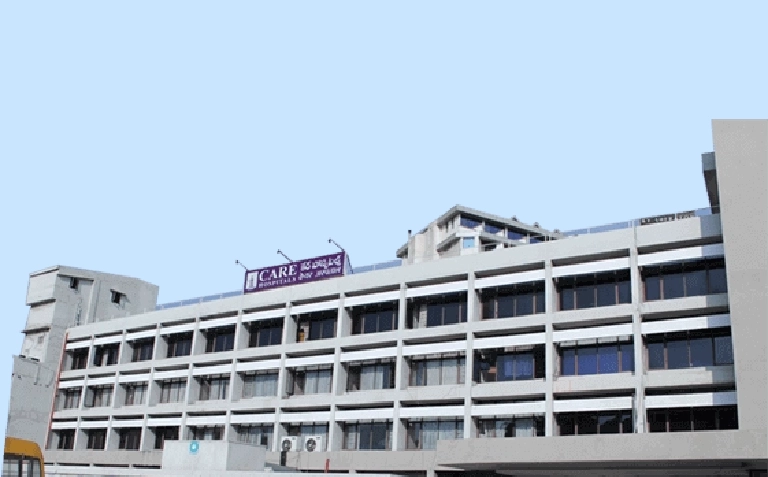
CARE Hospitals, Ramnagar, Visakhapatnam

CARE Hospitals, Health City, Arilova
Related Surgeries
- Best Hospitals for Cesarean Delivery in Hyderabad
- Best Hospital for Vaginal Hysterectomy in Hyderabad
- Best Hospital for Tubal Ligation Surgery in Hyderabad
- Best Hospitals for Endometrial Ablation Surgery in Hyderabad
- Best Hospital for Laparoscopic Hysterectomy Surgery in Hyderabad
- Best Hospitals for Oophorectomy in Hyderabad
- Best Hospital for Lower Segment Caesarean Section Surgery in Hyderabad
- Best Hospitals for Tubectomy Surgery in Hyderabad
- Best Hospitals for Total Abdominal Hysterectomy Surgery in Hyderabad
- Best Hospitals for Omentectomy Surgery in Hyderabad
- Best Hospitals for Bilateral Tubal Ligation Surgery in Hyderabad
- Best Hospital for Cervical Cerclage Surgery in Hyderabad
Frequently Asked Questions
Omentectomy surgery involves the removal of the omentum, which is a layer of fatty tissue that lies over the stomach, large intestine, and other abdominal organs. Doctors use it to treat or stage cancer by removing tissue that might hold cancer cells.
Removing just part of the omentum saves about 25 minutes compared to taking out all of it. If your surgeon needs to take out other parts like ovaries or fallopian tubes, it might take more time.
You could face issues like bleeding, infections, or even harm to nearby organs such as the bladder or ureters.
Recovery depends on the surgery and any additional work done. It can take anywhere from 2 to 8 weeks. Most people stay in the hospital between 3 to 7 days.
Scientists have discovered that omentectomy is a safe medical process. Taking out the omentum does not harm vital organs or lead to long-term health issues.
You might experience some pain after the operation. Doctors give medication to help manage it.
Omentectomy stands out as one of the key operations often performed during cancer treatments. This procedure happens under general anaesthesia, lasts a few hours, and may involve removing several organs.
If issues arise after surgery, doctors respond depending on how serious the situation is, such as:
- Use IV antibiotics along with caring for the wound and draining any abscesses
- Manage any bleeding issues
- Treat cases of bowel obstruction
- Drain fluids if ascites develops
- Surgically fix a hernia or other damaged organs when needed
Insurance pays for omentectomy if doctors find it required to treat cancer.
Doctors use general anaesthesia to keep patients comfortable and ensure precision during surgery. The anaesthesia team looks at a patient’s past medical history and overall condition before proceeding.
Patients recover faster by following post-surgery instructions. Key steps include:
- Doing breathing exercises to stop lung infections
- Moving legs and walking to reduce blood clot risks
- Keeping the surgical area clean to avoid infections
Healing needs 2-8 weeks. Most people leave the hospital in 4-5 days once their pain lowers and eating feels more manageable.
Still Have a Question?





























